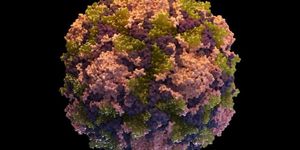Rats play hide-and-seek, and jump for joy when they win
Play is not just for humans – many animals including dolphins, cats, dogs, otters, and ravens engage in playful behavior. Studying the neuroscience behind play, however, is challenging; it must be done in a well-controlled setting, and by definition, it must be voluntary and spontaneous.
Recently, researchers at the Humboldt University of Berlin taught rats to play hide-and-seek with a human, and showed that rodents enjoyed the game, they report in the journal Science.
Annika Reinhold, a graduate researcher in Dr. Michael Brecht’s lab, first acclimated six adolescent rats to a 300-square-foot room with boxes and obstacles behind which they (or a human) could hide. She also stroked, chased and tickled them to get them used to her. After about a month, she taught them to seek her in an open room and eventually, while she hid fully. Reinhold's rats also learned to find hiding spots. Importantly, social interaction (tickles and pets), rather than traditional rewards such as food and water, was enough to motivate the rats to play the game.
Six rats learned to seek, and five learned to hide. Rats began each hide-and-seek session in a closed box that was remotely opened and they learned that this meant that it was their turn to find the hidden researcher. Reinhold and her colleagues believe that the rats truly understood the rules of the game because they preferred to hide in opaque boxes instead of transparent ones. The rats also noticed (and later used) the good hiding spots where their human playmates hid.
Rats enjoyed the game – during play sessions they emitted rat “giggles’” (high-frequency vocalizations not audible to humans) and performed “joy jumps”, which prior research found is another indicator of happiness.
So, what is going on in a rat’s brain when they play hide-and-seek? Brecht and his team implanted wireless electrodes into five of the rats’ medial prefrontal cortices (mPFC) – a brain region important for decision making, social interactions, and (in humans) theory of mind. Generally, they found that groups of neurons fired at specific times during hide-and-seek sessions. For example, certain neurons only fired when the rat was inside the starting box, while other cells were active during different phases of the game (“hide” or “seek”). “The rat has agency throughout the game, so some trials can be very fast and some can be very long,” he says, “but regardless, [neurons in the mPFC] are responding to specific events,” says Juan Sanguinetti-Scheck, who was involved in the study.
Scientists still do not know exactly what the mPFC is doing, and not everyone is persuaded that the rats were engaged – skeptics argue that the rats simply may have been demonstrating everyday behaviors, such as seeking out shelter.
Nevertheless, studies on the neural basis of play in rodents can help answer a lot of questions in neuroscience. “The rats are doing incredible behaviors that involve many things that neuroscience is preoccupied with, like decision making,” says Sanguinetti-Scheck. “There are many things that we can now use hide-and-seek to start studying,” he says. This complex game can be used to study memory, social interaction, prediction, and even role play, to name a few.
Source: Smithsonian Magazine, The Atlantic









